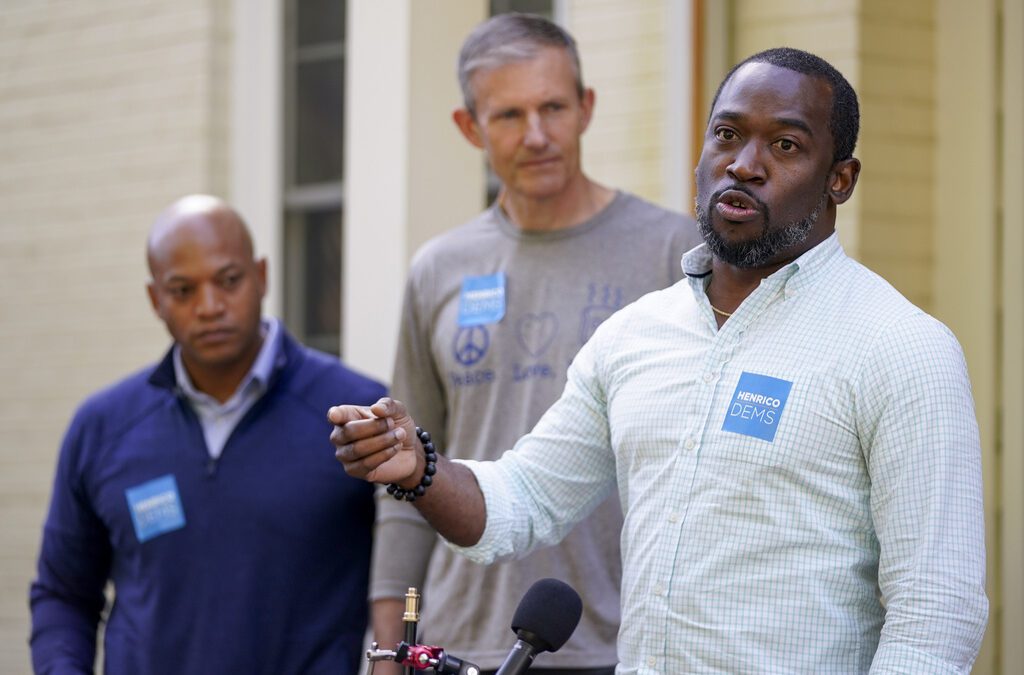
The House and Senate members say they’ve reached an agreement on the latest relief bill. So what’s in it?
WASHINGTON D.C.- Virginia families need help. Over the next eight weeks, judges will hear 8,766 eviction cases in the Commonwealth. Already, more than 14,000 families have lost eviction cases since June, putting them at risk of losing their homes when the current moratorium lifts. That’s why getting federal relief was so important.
On Dec. 1, Virginia Sen. Mark Warner and seven other federal lawmakers released their proposal for a relief package. Three weeks later, the House and Senate agreed to a COVID-19 relief deal based on that plan. Negotiators announced Sunday night they reached a compromise, one that will go through a final vote on Monday.
“Ten months into the pandemic, millions of American families, workers and small businesses are still struggling,” Warner said. “With unemployment benefits set to run out the day after Christmas and families facing eviction in the New Year, Congress cannot afford to delay help any longer.”
Warner told Dogwood that he was glad to see at least some relief going out before the end of the year.
“I’m pleased that congressional leaders took up our proposal and have finally announced long-awaited help for families, students, small businesses, healthcare providers and schools to get through at least the next few months of this crisis,” Warner added.
But what exactly did get approved? As we mentioned, lawmakers agreed to put help for renters in the proposal. But how much and for how long? Also, there are some specific rules that determine who gets a stimulus check. The same goes for anyone applying for this round of Payroll Protection Program loans.
There’s more in this package, both good and bad, than simply payroll relief. Before the House and Senate cast votes, here’s a look.
Renters Need Help
If the proposal passes today, it’ll set up the first federal emergency rental assistance program. There’s $25 billion set aside to make this work, with the goal of paying “past due rent, future rent payments [and] to pay utility and energy bills and prevent shutoffs,” the proposal states.
It’s not clear exactly how many people per state could be helped by this. If you divide $25 billion by 50, that leaves $500 million per state. The proposal doesn’t say how it would be divided up or if families would all get the same amount of assistance.
However, there is one issue. The federal government won’t be in charge of this fund. It would be “distributed by state and local governments,” the proposal says. Why is that an issue? Because Congress would have to work with Virginia and other states to set up that network. In Virginia, the situation might be a bit easier, as the state already has a rent mortgage relief program. That provides financial assistance to anyone behind on rent or mortgage payments after April 20. As long as your household makes 80% or less than your area’s average income, you can apply.
Right now, all you need to apply is proof of income (pay stubs, bank statements, letter from employer or social security documents), a valid lease or mortgage statement or other documentation confirming the landlord-tenant relationship.
One thing renters will definitely have under this plan is more time. If lawmakers approve the package today, the current Centers for Disease Control eviction moratorium would extend through Jan. 31, 2021.
RELATED: Your Landlord Can’t Just Tell You to Leave. Here’s How Virginia’s Eviction Process Works.
Who Gets a Check?
We’ve all heard some of these details. We know stimulus checks will be $600 this time around, for example. But let’s go a little deeper. First off, people only get the $600 if they make up to $75,000. Couples making up to $150,000 together qualify for $1,200. You also get $600 for every child in the household.
Meanwhile, this package revives federal unemployment insurance, which expired in July. There’s a few changes from the original version back in March. First, the unemployed get $300 per week, down from $600 in the original package. It’s also a very short-term solution, with an end date of March 14, 2021.
Small business owners also get some help, with $325 billion set aside for programs. That includes $284 billion for a new round of Payroll Protection Program loans. Just like the first round, you won’t have to pay it back if you spend at least 60% on payroll. Aside from that, you can use it to cover rent, utilities and mortgage payments for the company.
Specific industries get part of the money. For example, $15 billion goes to any live venues, independent movie theaters and anything considered a “cultural institution.” Another $20 billion has to be used on grants in low-income communities.
Now there are also some groups who don’t get a check. The proposal includes no money for state or local governments, as that was a controversial topic. If you’re shrugging that off, remember local budgets provide funding for police and fire departments.
If residents can’t pay their taxes, that cuts into salaries, equipment purposes and training measures. Lower budgets mean less money for services. Without federal support, that could cause problems.
Where Do Transport and Broadband Dollars Go?
Another part of Warner’s original proposal that made it through negotiations was transportation funding. The plan sets aside $15 billion for airline payroll support, $14 billion for transit programs, $10 billion to repair state highways, $2 billion for airports, $2 billion for the private motorcoach, school bus and ferry industries, to cover payroll costs. There’s also $1 billion each set up for Amtrak and airline contractor payrolls.
“In particular, keeping transit agencies running will allow those who must take transit—essential workers, seniors, low-income and communities of color—to get to work and access services,” the plan reads.
The $14 billion set aside for transit covers rail and bus operations, the plan states.
“[This] will will keep transit agencies from implementing draconian cuts that would otherwise disproportionately impact communities of color,” it says.
Meanwhile, $3.2 billion will go to help low-income families set up broadband and $300 million to bring broadband to rural areas of the country. Finally, there’s $250 million to help fund telehealth operations. It’s unclear exactly how any of this would happen, as there’s no details provided about what agencies are in charge, where the money goes or who decides which areas get chosen.
What About School Funding?
Finally, the bill offers some funding for schools, but it’s split between public and private operations. A total of $54.3 billion will be split between all public K-12 schools in the nation. For private schools, $4.05 billion will be divided up. Colleges and universities aren’t left out either. They get $22.7 billion to split among the 5,300 higher education facilities. An extra $1.7 billion goes to historically black colleges and universities, as well as tribal colleges.
The government will also help people afford food. A total of $13 billion in the new plan goes to increase SNAP (Supplemental Nutrition Assistance Program) benefits. Anybody using SNAP will get 15% more each month.
The bill also included $13 billion for direct payments, purchases and loans to farmers who were hit hard by the pandemic. If those farmers donate crops to a local food bank, they also get some funding help.
This relief package goes for a final vote in both the House and Senate today. The House is expected to pick it up first this morning, with the Senate following this afternoon.
Brian Carlton is Dogwood’s managing editor. You can reach him at [email protected].
Politics

Biden administration bans noncompete clauses for workers
The Federal Trade Commission (FTC) voted on Tuesday to ban noncompete agreements—those pesky clauses that employers often force their workers to...

Democratic shakeup in Virginia primaries for governor, lieutenant governor
Richmond Mayor Levar Stoney quit his bid for governor and jumped into the race to be the Democratic nominee for lieutenant governor. The race for...
Local News

The zodiac signs of 12 iconic women offer insight into their historic accomplishments
Zodiac signs can tell you a lot about someone’s personality. Whether they’re an earth, water, air, or fire sign, these 12 categories (which are...

Virginia verses: Celebrating 5 poetic icons for National Poetry Month
There’s no shortage of great writers when it comes to our commonwealth. From the haunting verses of Edgar Allan Poe, who found solace in Richmond's...




